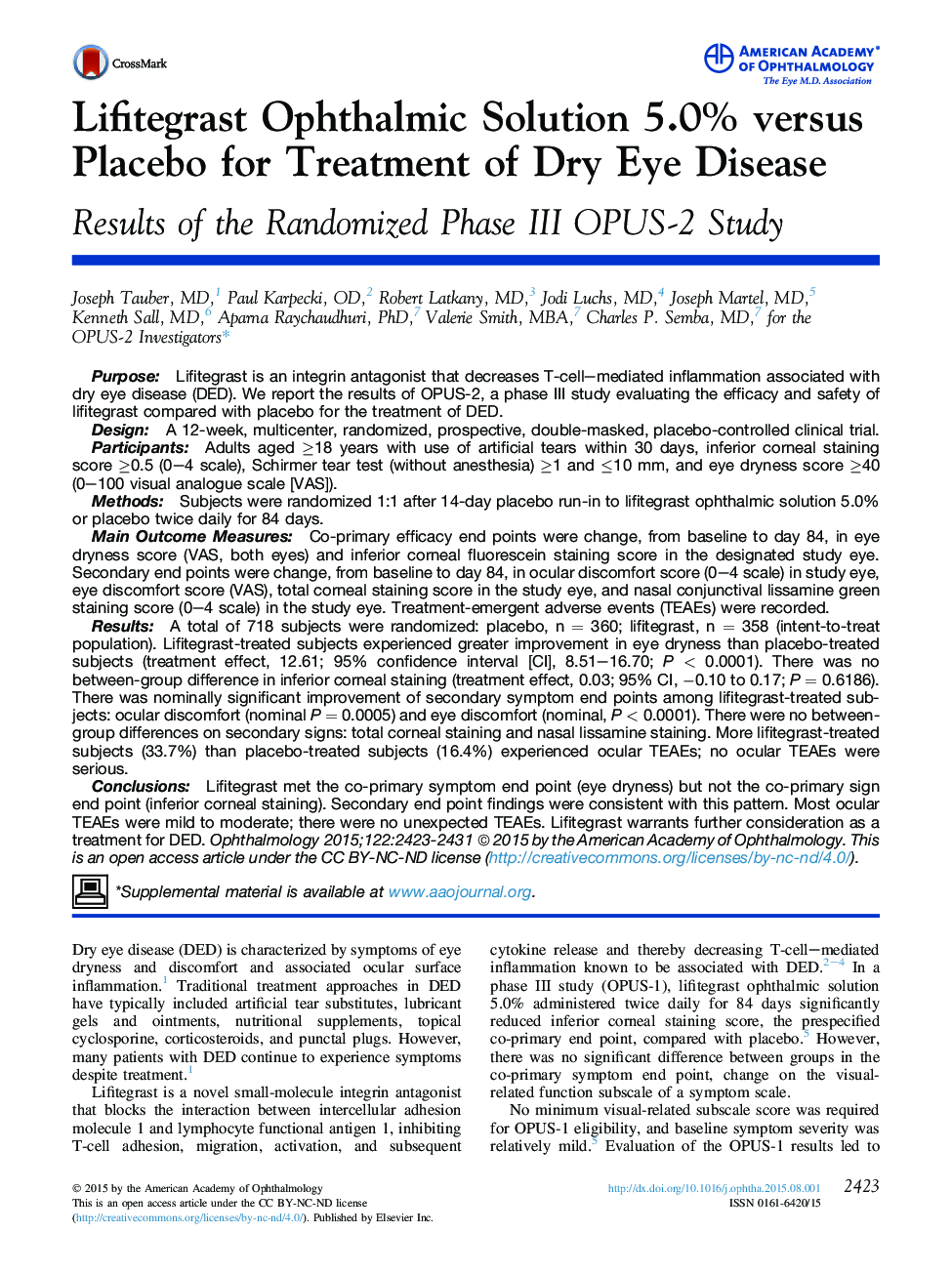| کد مقاله | کد نشریه | سال انتشار | مقاله انگلیسی | نسخه تمام متن |
|---|---|---|---|---|
| 6199511 | 1262401 | 2015 | 9 صفحه PDF | دانلود رایگان |

PurposeLifitegrast is an integrin antagonist that decreases T-cell-mediated inflammation associated with dry eye disease (DED). We report the results of OPUS-2, a phase III study evaluating the efficacy and safety of lifitegrast compared with placebo for the treatment of DED.DesignA 12-week, multicenter, randomized, prospective, double-masked, placebo-controlled clinical trial.ParticipantsAdults aged â¥18 years with use of artificial tears within 30 days, inferior corneal staining score â¥0.5 (0-4 scale), Schirmer tear test (without anesthesia) â¥1 and â¤10 mm, and eye dryness score â¥40 (0-100 visual analogue scale [VAS]).MethodsSubjects were randomized 1:1 after 14-day placebo run-in to lifitegrast ophthalmic solution 5.0% or placebo twice daily for 84 days.Main Outcome MeasuresCo-primary efficacy end points were change, from baseline to day 84, in eye dryness score (VAS, both eyes) and inferior corneal fluorescein staining score in the designated study eye. Secondary end points were change, from baseline to day 84, in ocular discomfort score (0-4 scale) in study eye, eye discomfort score (VAS), total corneal staining score in the study eye, and nasal conjunctival lissamine green staining score (0-4 scale) in the study eye. Treatment-emergent adverse events (TEAEs) were recorded.ResultsA total of 718 subjects were randomized: placebo, n = 360; lifitegrast, n = 358 (intent-to-treat population). Lifitegrast-treated subjects experienced greater improvement in eye dryness than placebo-treated subjects (treatment effect, 12.61; 95% confidence interval [CI], 8.51-16.70; P < 0.0001). There was no between-group difference in inferior corneal staining (treatment effect, 0.03; 95% CI, â0.10 to 0.17; P = 0.6186). There was nominally significant improvement of secondary symptom end points among lifitegrast-treated subjects: ocular discomfort (nominal P = 0.0005) and eye discomfort (nominal, P < 0.0001). There were no between-group differences on secondary signs: total corneal staining and nasal lissamine staining. More lifitegrast-treated subjects (33.7%) than placebo-treated subjects (16.4%) experienced ocular TEAEs; no ocular TEAEs were serious.ConclusionsLifitegrast met the co-primary symptom end point (eye dryness) but not the co-primary sign end point (inferior corneal staining). Secondary end point findings were consistent with this pattern. Most ocular TEAEs were mild to moderate; there were no unexpected TEAEs. Lifitegrast warrants further consideration as a treatment for DED.
Journal: Ophthalmology - Volume 122, Issue 12, December 2015, Pages 2423-2431